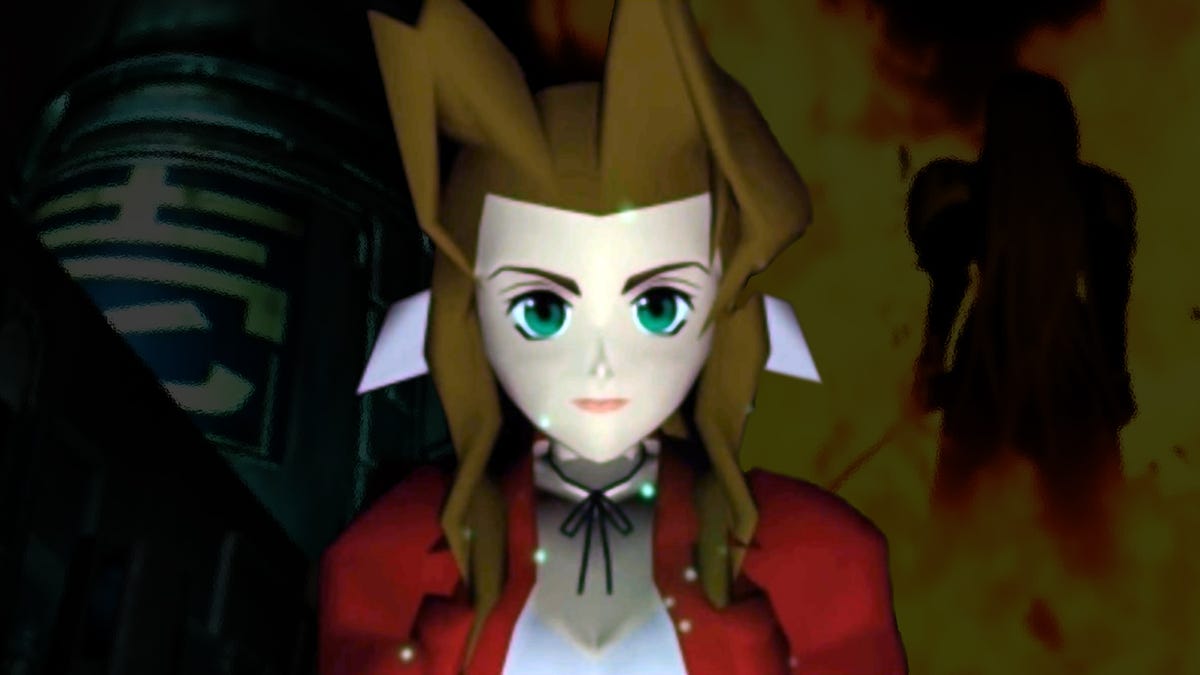Final Fantasy VII Rebirth came out in February 2024. Perhaps you’ve recently finished the game and are now in search of something new to play. Whether you’ve played the original or not, there is never a wrong time to play the original Final Fantasy VII.
And if you’re new to the world of Cloud and co. and are curious about 2020’s Final Fantasy VII Remake and this year’s Rebirth, but haven’t played the original, you may be wondering if you have to play the 1997 classic before jumping in.
While Remake probably won’t leave FF7 newcomers out in the cold, both Remake and Rebirth are very much in dialogue with the original game—sometimes so directly that this current remake project really does feel like a giant meta exercise.
Read More: I’m Convinced FF7 Rebirth Is A Sequel To The Original
Here I’ll lay out some essential considerations to make when diving back into this essential epic of gaming history, whether it’s your first time or not.
Which version?
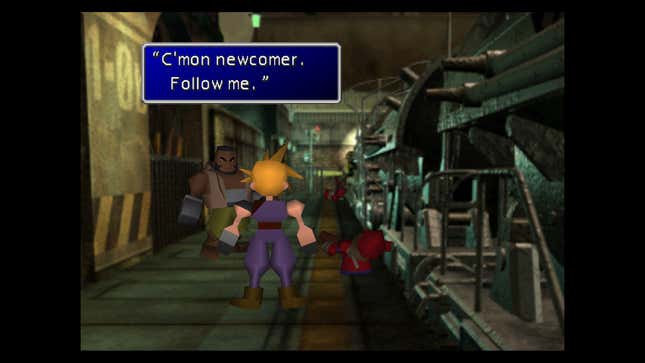
The original Final Fantasy VII isn’t terribly hard to source. If you have a modern console such as a Nintendo Switch, PS5, Xbox Series X/S or even last generation machines like the PS4 and Xbox One, you can easily grab a copy from each platform’s respective stores. This version has smoother-looking polygons than the original PlayStation release, but the pre-rendered backgrounds are largely untouched. It also features great quality-of-life features, such as a 3x speed toggle, the ability to avoid random encounters, and a setting that instantly heals characters to max health and raises their Limit Break status. And while the English translation was improved, it still features some of FF7’s awkward phrasing as a result of its famously rushed origins. It even defaults to naming Aerith “Aeris” like the original English version did in 1997.

Is it Aerith or Aeris?
In the Japanese version of FF7, the character we know as Aerith was named “Earisu,” which should translate to “Aerith.” FF7 had a notoriously rushed English translation, resulting in some bad grammar, odd turns of phrase, and the strange use of words like “wastrel” and “mosey.” One of these translation casualties was Aerith’s name, which appeared as “Aeris” in the 1997 version.
Modern versions of the original FF7, however, have kept this mistranslation. Since you can change every main character’s name in FF7, you are free to kill the S and add a TH if you’re so inclined. For me, as someone who played the game when it came out, seeing “Aeris” on the screen takes me back to those happy memories.
FF7 is also available on Humble Bundle or Steam. However, the Steam version, unlike the console iterations, does not include the aforementioned quality-of-life features such as the ability to avoid random encounters. The Steam version, however, can be modded. So if you want to change out the in-game character models, swap out the old music with the updated tracks from Remake, add FFVIII’s Triple Triad, and so much more, the PC version is very fun to tinker with—especially if you’ve played this game to death.

What about Ever Crisis?
In 2023, Square Enix released Final Fantasy VII: Ever Crisis for mobile platforms and Windows. It contains a colossal amount of lore from FF7’s expanded universe, including recreations of scenes from the original game with slightly more modern versions of the polygonal models from FF7. While you can experience the original narrative through this app, I highly recommend playing the original instead as Ever Crisis is loaded with microtransactions and very much wants you to spend lots of money. Check it out after finishing the original game, if you’re curious.
If you have an original copy of FF7, all PS3 models will play original PlayStation discs, so if you have one of those lying around, too, you’re good to go. That said, if you do have an original copy of Final Fantasy VII, do yourself a favor and hunt down an old PSX (and a CRT TV!) to enjoy this game like it’s 1997. Note that the original contains a bug that makes it impossible to raise your party’s magic defense. Modern re-releases of the game have fixed this.
Important ‘config’ settings
As a game from 1997, Final Fantasy VII has far fewer settings than most modern AAA games. That said, while in game, you can select “Config” from the menu to alter a few choice elements of the game.

One of the most fun is the ability to alter the color of the text boxes and menus. The default blue is a classic, but it can be fun to change up the color over the course of the game. I like to change it after each major story beat, but you can also change it across different game saves if you want.
There’s also a handy Cursor setting. This affects the behavior of your cursor during battles. When set to “Initial,” the cursor will reset to the top choice on each character’s turn. “Memory,” however, will return the cursor to the last combat option you selected per character. This is handy if you plan on using the same spell or item multiple turns in a row. And it’ll make combat a little faster for characters you’ll almost always use spells with, such as Aeris/th.
What’s going on with the ATB settings?
FF7 uses an active turn-based combat system called Active Time Battle. On “Active” setting, you’ll choose your attacks and actions on your turn once the time gauge fills up, but time never pauses. If you’re new to FF7, this can make boss fights in particular feel more stressful as combat won’t stop as you’re digging through menus for items or spells.
Read More: I Thought Aerith Had Goat Ears
The “Recommended” setting is a little confusing. While characters are casting spells, using Limit Breaks, or using a summon, time will pause if you are looking through the spell or item list.
When set to “Wait,” time will pause anytime you’re looking through your spells or items.

Brand new players should try out Wait and Recommended. Active, however, can make the combat feel much speedier, especially if you increase the battle speed in the config menu.
General gameplay tips
FF7 is an old-school RPG from the ‘90s. Its story, characters, and soundtrack may be timeless, but many of its gameplay elements might seem cryptic or archaic by today’s standards. Here are a few things to keep in mind while saving the planet with your buddies.
Combat positioning and defending
While you can’t move your characters freely around the battlefield during combat, there are two non-obvious “rows” for combat positioning. If a character’s portrait in the menu screen is on the left-most side, they’re at the “Front,” where they’ll enjoy a boost in attack power at the cost of lower defense.
When a character portrait is on the right-most side, they’re in the “Rear,” where they’ll see lower melee attack damage but will enjoy a higher defense. Notably, however, some weapons, like Barret’s gun-arms, are “Long range weapons,” meaning they’ll do the same damage whether the character is in the Front or Rear. You can check a weapon’s range by hovering over it in the “Item” menu.

Don’t miss out on Yuffie and Vincent!
Unlike the other party members, our materia thief and mystery coffin-sleeper won’t just naturally join your party as you progress through the main story. To recruit Yuffie, you’ll need to venture into the forests outside of Junon and encounter her in a battle. Once you defeat her, you’ll have a cute dialogue exchange. Pick the following options to get Yuffie to join you: “Not Interested,” “...petrified,” “Wait a second!” “...that’s right,” and “...let’s hurry on.” Don’t use the save point in this area, as it will take you out of the field screen and Yuffie will vanish.
You’ll be able to recruit Vincent when you return to Nibelheim. You’ll find a safe on the second floor of the Shinra Manor. The code is Right 36, Left 10, Right 59, Right 97. Prepare for a tough fight after opening the safe. Then go down to the basement and enter the room on your left when heading toward the lab/study area where Sephiroth had his little revelatory meltdown.
You can either change order in the menu by selecting “Order,” or during combat by hitting left on the d-pad during a character’s turn and selecting “Change.”
You can also command a character to defend, thus mitigating damage by half, by hitting right on the d-pad during a character’s turn and selecting “Defend.”
Save as often as you possibly can
FF7 was released in the era before autosave became standard. Be sure to save, preferably in a new slot, every single time you see a save point or step out into the field. If you die, you’ll go back to your last save point so it’s very easy to lose hours of progress.

Field screen, battle screen, menu screen, over world: Learn the lingo
In FF7 you’ll cycle through four main screens. The “field screen” is any environment with a pre-rendered background where you’ll explore and chat with NPCs. The “battle screen” is where combat happens, a 3D environment signaled by a loud splash sound. The over world is a 3D-rendering of the planet where you’ll travel from town to town; you can save the game at any time while in the over world. Finally, there’s the menu screen, which you activate by pressing the top face button on a controller. You’ll manage all of your character’s equipment there.
Your health and MP won’t regenerate at these save points unless you use a Tent, which is only usable at save points or out in the world map.
Be strategic with Limit Breaks (but don’t be too shy with them)
You can actually hold on to Limit Breaks—powerful signature attacks and abilities each character possesses—across battles. Once the gauge fills up, it will remain available for that character until you use it. A filled Limit Break gauge, however, will lock you out of using your basic attack.
It’s not a bad idea to hold on to Limit Breaks if you know a boss fight is around the corner. Once you’re in combat, feel free to use those more powerful moves. The original FF7 doesn’t have a stagger system like Remake and Rebirth do, so there’s no point holding onto those Limit Breaks unless you’re saving them for a boss battle.
You can unlock new Limit Breaks early on
Each character has four levels of Limit Breaks, with each level offering two unique abilities. You’ll unlock each level’s second Limit Break ability by using the first one a certain number of times. For example, you’ll unlock Cloud’s Cross-Slash after using Braver eight times. Gaining a new Limit Break level requires you to defeat a certain number of enemies. Cloud’s level-two limit break, for example, requires you to defeat 120 enemies with him.
There’s a great opportunity early on in the game to get Cloud, Barret, and Tifa’s second level-one Limit Break abilities. While you’re heading to the Sector 5 reactor, after jumping off the train, run toward the screen. You’ll have to travel through a few screens but eventually you’ll arrive at a scene with two guards who’ll attack you when you approach.

From here you can engage in several battles by choosing “Stay here” after each battle. If you’re playing a modern version of the game with “God Mode” (activated by pushing both thumbsticks in on the controller), and 3x speed (activated by pushing the left thumbstick in), you can treat this series of battles as an XP farm and a Limit Break farm by spamming Limit Breaks in each battle.
Always check your inventory for new weapons, armor, accessories, and materia
FF7 was made in 1997, so it doesn’t have a menu that’ll badger you with flashing indicators whenever you pick up something new. While you’ll usually be notified of receiving a new item after picking it up in the field or as a reward after a battle, it’s very easy to forget you’ve done so. It’s a good idea to check your inventory frequently to make sure your characters are using the best possible equipment.
Always check shops for new materia and equipment
FF7 wants you to be on the lookout for new materia and items. You can get plenty of Gil from random encounters, so farming for cash isn’t too hard. But be sure to check in with anyone who’s selling things to see if they have something special that could give you an edge in the battles to come.
Don’t forget about the ‘Select Button’
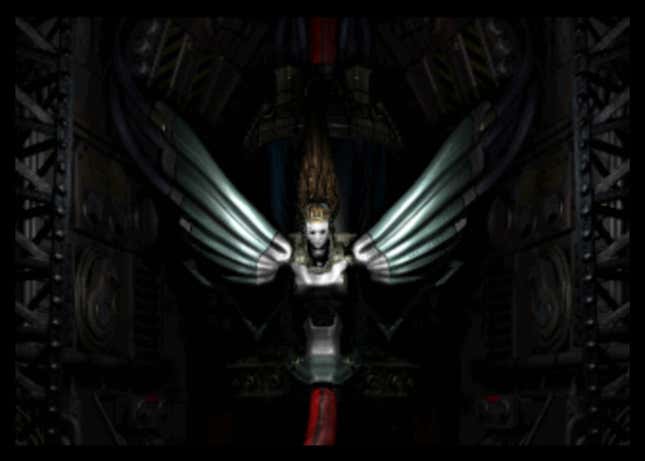
While most modern controllers have long since done away with Start and Select buttons, modern versions of FF7 retain the “Select button” feature, bound to the “-” button on Switch, the “View” button on Xbox (the one with two squares), or the left side of the touchpad on a PS4/5 controller.
This will activate a pointer that hovers over your character while exploring the world, accompanied by red arrows to indicate doors and green arrows to indicate ladders. It’s a quick way to figure out what’s available to you if you’re lost. During combat, this will add a second menu that tells you the names of enemies when targeting them as well as relevant combat info if you’ve used the Sense materia on a target.
Modern versions of FF7 don’t totally make combat irrelevant
You might’ve heard that the modern versions of FF7 found on PS5, Xbox Series consoles, and Switch let you just focus on the story. Sadly, that’s only partially true.
If you just want to experience the story and not engage in any combat, you might be better off just watching a no-commentary Let’s Play or something. Current versions of FF7 still require you to engage in combat and do some character leveling and speccing. I don’t find this to be a bad thing as this is a game, after all.
However, the added features, such as speeding up the game, giving your characters max health instantly, and skipping random encounters, do make the experience of Final Fantasy VII a bit easier to manage. Here’s how these features work and how you can best make use of them:
God Mode doesn’t make you completely invincible
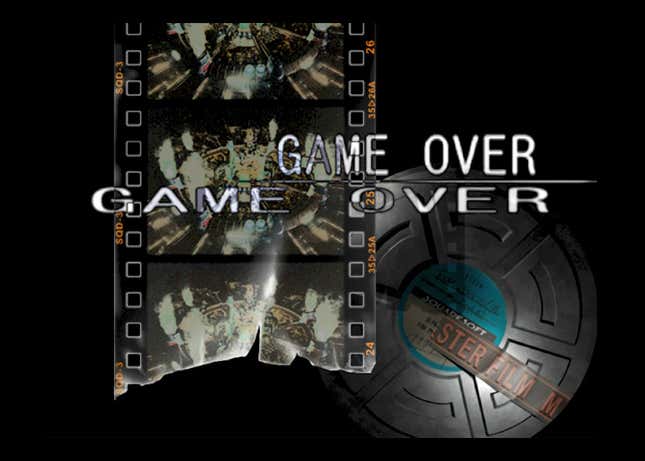
This tip concerns all versions of FF7 which allow you to speed up the game, turn off random encounters, and activate “God Mode” by pushing both thumbsticks in. While it usually works just fine for random encounters, it’s not going to save you from bosses you’re not appropriately leveled and equipped for.
Although this mode will instantly regenerate your HP back to its highest value after every hit you take, if you get hit with damage that’s higher than your maximum HP, you will still die. When you consider that many bosses have attacks that hit all party members for large amounts of damage, that means you very much can reach a game over screen even with “God Mode” turned on.
So what should you use this mode for? It’s great for grinding random encounters as low-level monsters are unlikely to kill you with this mode on. It’s also an easy way to reset your health and MP like the blue benches do in FF7 Rebirth. Also, if you just unlocked a new Limit Break and want to try it out right away, it’s very handy for that as well.

Skipping too many random encounters will leave you dramatically underleveled
Pressing in the right thumbstick on modern versions of FF7 will cancel out all random encounters. Sometimes this is a nice change of pace, but you should use it intentionally. Don’t leave it on all the time. FF7’s bosses were designed with the understanding that players would go through multiple random encounters, hence upping their level over the course of the game, not just from pivotal fights. Random encounters are also a solid way to slowly build up enough Gil to buy items, weapons, armor, and materia.
Sometimes it’s nice to give yourself a break and avoid random encounters, but be sure to dedicate time to engaging in them to make sure you’re properly leveled.
Speeding up the game can make it harder
I like to treat the 3x speed option as a kind of sprint button. It’s even bound to the left thumbstick like most sprint commands in modern games. 3x speed is a great way to speed up complex fight animations, climbing ladders, or traversing the open world. That said, certain mini-games and sequences like capturing a chocobo during a battle are made much harder when you have to keep up with the game running at three times its intended pace.
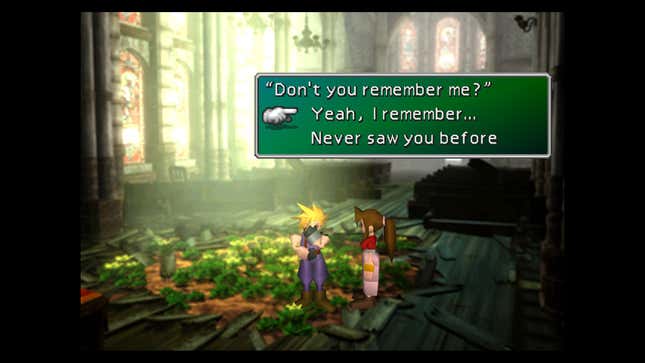
FF7 is a classic video game. It’s an excellent RPG featuring a wonderful and dynamic tale, set in a vivid world that fuses science fiction and fantasy, brought to life by genuinely interesting combinations of 2D and 3D graphics, and set to one of the greatest soundtracks of all time—and not just in video games, I genuinely mean of all time. It’s a game that should be on your list to play whether it’s your first time, seventh time, or 777th time.
